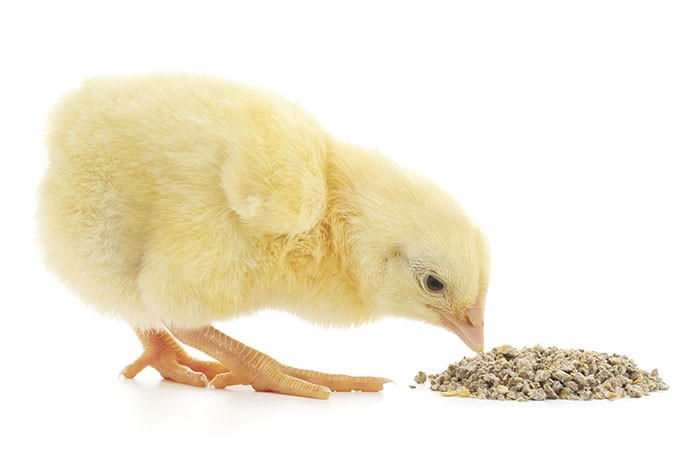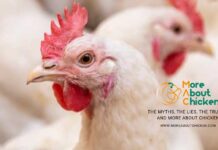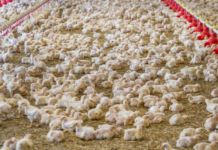
Whilst xylanase rich NSP-enzymes are used consistently in wheat based diets the question remains whether the positive response seen can be ascribed solely to the xylanase component or whether other enzyme activities are involved.
This question becomes more pertinent when a variety of materials is used in the compound diet, potentially requiring a variety of enzyme activities. A trial was therefore set up to investigate whether five commercial xylanase based enzyme products, based on different source and/or production organisms and differing in declared main component activities, would give different rankings in two different wheat based diets.
2112 male Ross 308 day old broiler chicks were weighed and 22 per floor pen (2.2 m) were assigned to one of 8 replicates of 12 treatments according to a 2*6 factorial design. Two wheat based diets were formulated, one was a simple diet (simple) based on soybean meal and the second was a complex diet (complex) with a variety of feed ingredients (peas, distillers dried grains, sunflower meal, rapeseed meal) as well as soybean meal. Typical nutrient levels according to Schothorst recommendations were used, with the AME level reduced to allow the usage of the lower energy by-product materials. All diets contained phytase (500 FTU/kg, Quantum, AB Vista) and coccidiostats (Nicarbazin/Narasin in starter and Narasin in grower and finisher). Diets were supplemented with either no NSP enzyme or a standard dose of one of the five xylanase based enzyme products.
Birds were fed a pelleted (2.3 mm) starter (0-14d of age), pelleted (3.0mm) grower (14-35d) and finisher (35-42d) diet; both feed and water were offered ad-libitum. Weight and feed intake were determined and FCR calculated at 35 and 42 days of age. At 25 d of age ileal viscosity was measured in two birds per pen and at 28d of age the condition of the foot pads (0-4, 0=no lesions and 4=severe lesions) was assessed in 10 birds per pen. Litter quality (0-10, 0=wet and 10=dry and friable) was assessed at day 21 and day 35. Data were analysed by ANOVA with main effects of diet and NSP enzyme and the interaction tested.
Dietary nutrient contents and in feed enzyme assays were within acceptable limits of the targets. In vivo viscosity measurements showed no effect of enzyme addition, with all measured values being low (2.81 cps averaged across all treatments) indicating that the wheat used in the basal diets was a low viscosity wheat. At 35 days of age FCR was improved by only one of the enzyme products, a single xylanase product (1.483 cf 1.517 for the control; P=0.005).
At 42 days of age there was an interaction between diet type and enzyme product (P<0.001) for FCR. One single xylanase product gave a significant improved FCR in both diet types (simple: 1.600 cf 1.642; complex: 1.618 cf 1.643) whilst in the simple diet three of the products showed no significant improvement and in the complex diet one of the other products showed no significant improvement. Litter quality was significantly (P<0.001) affected by diet type at both 21 and 35 days of age, with quality being higher for the simple diet at 21 days (7.0 cf 5.9) whilst at 35 days this was reversed (5.9 cf 6.7), but there was no effect of enzyme addition. Neither diet type nor enzyme treatment affected foot pad scores.
From the Aust. Poult. Sci. Symp.
















